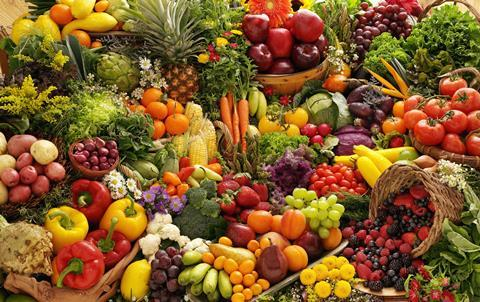Benefits of fruit and vegetables
fruit and vegetables:
- provide vitamins and minerals, such as folate, vitamin C, and potassium Buy our best seller here.
- provide dietary fiber, which helps maintain a healthy gut and prevent constipation and other digestion problems
- can help reduce the risk of serious health problems, such as heart disease, stroke, type 2 diabetes, obesity, and a few cancers
- are usually low in fats and calories (as long as you don’t fry them or roast them in oil)
Getting the most from fruit and vegetables
To get the most benefit, include different fruit and veggies, ranging in color.
This is because different fruits and vegetables include different combinations of fiber, vitamins, minerals, and other nutrients.
This can include fresh, frozen, tinned, dried, and juiced fruit and vegetables.
Potatoes are not included in the fruit and vegetable food group.
Some vitamins and minerals may be lost when fruit and vegetables are prepared or cooked.
To get high-quality health benefits:
- eat fresh fruit and vegetables as soon as possible rather than storing them for a long time, or use frozen instead
- don't overcook - start with boiling water and cover tightly to keep in the steam because this speeds up the cooking
- use a steamer or a microwave
- use as little water as possible when you cook fruit or vegetables or use the cooking water for sauce or soup to recapture some of the lost vitamins and minerals
- avoid leaving any veggies open to the air, mild or warm if they were cut - constantly cowl and relax them, and do not soak due to the fact nutrients and minerals can dissolve
Five quantities each day
There are distinctive methods to feature greater fruit and veggies for your ordinary ingesting habits.
Options for reaching your five-a-day target include:
- at breakfast, add fruit to cereal, porridge, or lower-fats yogurt - try a handful of berries or a chopped banana or upload mushrooms or tomatoes to scrambled eggs
- add fresh, frozen, or canned fruit and vegetables to meals: sprinkle sweetcorn or pineapple chunks on the top of a thin-based pizza, or liven up soups and sauces with a handful of kidney beans, peas, or sweetcorn
- add fruit and vegetables to your meals, for example, chopped carrots to Bolognese sauce, sprinkle chopped red peppers on pasta, or mixed vegetables in a stir-fry
- add lettuce, tomatoes, cucumber, or grated carrots to sandwiches
- dip cucumber, peppers, carrot, cauliflower, or broccoli florets in salsa or lower-fat cheese spread
- add beans, lentils, and pulses to stews, bakes, and salads - beans and pulses count as one portion a day
- have a salad or vegetable side dish with your main meal drink one glass (150ml) of unsweetened 100 percent fruit or vegetable juice
- make a quick smoothie in a blender using your favorite fresh or frozen fruits - but remember a smoothie should be limited to 150ml and can best count as one portion
